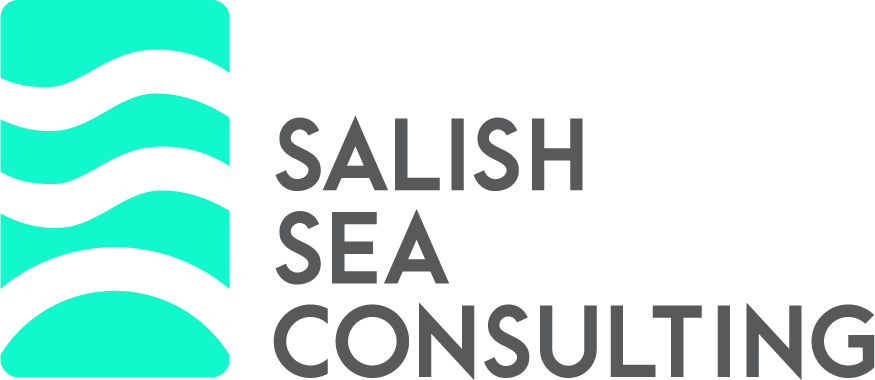A Guide to Navigating the ESG Framework Landscape

You face more pressure than ever to meet ESG standards. Investors, customers, and regulators all want proof that you take environmental, social, and governance issues seriously.
Where do you start with so many frameworks and reporting rules? Each one has its own focus and requirements. The choices you make now can affect your reputation and your bottom line.
Are you picking the right framework for your business? Do you know what data you need to collect? Clear answers help you avoid confusion and wasted effort. Let's break down what matters most so you can move forward with confidence.
The ESG Framework Landscape
ESG frameworks set standards for reporting on environmental, social, and governance factors. Examples include GRI, SASB, TCFD, and CDP, with each framework focusing on different criteria.
Framework Overview
GRI - Broad sustainability topics - Covers general sustainability across all industries SASB - Industry-specific metrics - Tailors metrics to your specific industry
TCFD - Climate-related financial disclosures - Targets climate risks and scenario analysis CDP - Carbon emissions and environmental impact - Collects data about environmental performance
Regional Considerations
Framework selection depends on your stakeholder expectations and geographic location:
- Investors prefer SASB and TCFD in financial markets
- Customers often look for GRI reports
- Europe: CSRD guides reporting for EU-based entities
- United States: SEC climate disclosure drives reporting for public companies
Data Requirements by Framework
GRI - Detailed operations and supply chain information - Comprehensive sustainability data across all areas SASB - Financially material metrics - Focused on industry-specific material issues
TCFD - Climate risks and scenario analysis - Forward-looking climate impact assessments
Key Questions to Ask
- Which framework fits your industry best?
- Are your stakeholders driving you toward one standard?
- What data points can you actually provide?
- Do you track changes from groups like EFRAG and ISSB?
Key ESG Frameworks and Standards
Many ESG frameworks exist, each focusing on different priorities and audiences. Choosing the right framework depends on your industry, your stakeholders, and your data.
Global Reporting Initiative (GRI)
Best for: Broad sustainability reporting across multiple topics
Key Features: • Reports on emissions, labor, and supply chain issues • Captures energy usage, waste management, and human rights data • Used by companies like Unilever and GM for annual sustainability reporting • Meets expectations of stakeholders in over 90 countries
Critical Question: What gaps could your business have if you skip broad sustainability data?
Sustainability Accounting Standards Board (SASB)
Best for: Industry-specific, financially material ESG reporting
Key Features: • Focuses on material ESG issues by sector (e.g., water management in food, privacy in tech) • Reviewed by major investors like BlackRock and Vanguard • Covers financial impacts of ESG issues to support investor decisions
Critical Question: Where does your industry face the biggest ESG risks according to SASB metrics?
Task Force on Climate-related Financial Disclosures (TCFD)
Best for: Climate-related financial risk disclosure
Key Features: • Covers governance, strategy, risk management, and climate metrics • Requested by banks, insurance groups, and governments worldwide • Used by companies like HSBC and Glencore for climate exposure reporting
Critical Question: How prepared is your organization to report on climate impacts with TCFD guidance?
Challenges Navigating ESG Frameworks
Navigating ESG frameworks brings specific obstacles for your business. Each framework sets unique expectations, and meeting all demands can stretch your resources. Recognizing these barriers enables you to make smarter choices.
Overlapping Requirements
The Challenge: • Many frameworks ask for similar ESG data sets • Duplicate reporting increases workload and introduces inconsistencies • Same information reported multiple times using different methods • Example: Carbon emissions counted differently across frameworks
Key Question: Have you checked if your collected data already fulfills more than one requirement?
Regional Variations
The Challenge: • ESG reporting rules differ by region • European businesses report under CSRD; US companies answer to SEC climate disclosures • Standards can conflict or overlap for global operations • Single data fields measured using different regional benchmarks
Key Questions: • How do you manage alignment when operating across regions? • Have you compared disclosure expectations between jurisdictions to avoid noncompliance?
Strategies for Effective ESG Framework Adoption
You improve your ESG reporting results by rooting decisions in business goals and meeting stakeholder needs. Direct actions help reduce reporting complexity and support long-term value.
Aligning With Business Objectives
Strategic Approach: • Tie ESG framework selection to key business priorities • Link ESG targets to measurable business metrics • Review which frameworks are favored by investors in your sector • Choose frameworks that help attract customers or investors who care about your priority areas
Example: If reducing emissions supports your brand, choose GRI (used by Unilever and GM) that highlights environmental data.
Integrating Stakeholder Expectations
Implementation Steps:
- Survey - Ask customers, investors, and suppliers about important ESG data - Identify what stakeholders actually review
- Analyze - Identify ESG topics from meetings and client proposals - Focus on real business needs
- Benchmark - Compare reporting formats with peers - Build trust with analysts and NGOs
- Engage - Get Board and senior leader buy-in early - Tie ESG to performance reviews and incentives
Do your ESG disclosures answer real questions from stakeholders, or just fill a template?
Emerging ESG Topics
New Areas of Focus:
Biodiversity - Added to GRI metrics - New data collection requirements Human Rights - Enhanced labor rights reporting - Supply chain monitoring needs AI Ethics - Emerging in reporting frameworks - Technology governance requirements
Preparation Checklist
Assessment Questions: • What gaps exist in your current ESG data collection? • How often do you update ESG metrics? • Which frameworks do your key investors and customers follow? • Which future reporting standards could impact your business model?
Action Steps: • Start scenario planning for likely ESG rule changes in your regions • Build flexible data systems for quick adjustments • Engage with leading ESG standards groups to stay informed • Periodically review your ESG strategy for compliance and competitiveness
Navigating the ESG framework landscape can feel overwhelming, but it's also an opportunity to strengthen your business and build lasting trust with stakeholders. By staying proactive and adaptable, you'll be better equipped to manage evolving ESG requirements and turn compliance into a competitive advantage.
Keep your focus on aligning ESG efforts with your core business goals and don't hesitate to leverage new tools or seek expert guidance. With the right approach, you can simplify your ESG journey and position your business for long-term success.
Frequently Asked Questions
What are ESG frameworks and why do they matter for businesses?
ESG frameworks are sets of guidelines that help businesses report on environmental, social, and governance practices. They matter because investors, customers, and regulators increasingly expect businesses to be transparent about their sustainability efforts. Adopting the right framework builds trust and reduces compliance risks.
Which are the main ESG frameworks businesses should consider?
The most commonly used ESG frameworks are GRI, SASB, TCFD, and CDP. GRI offers broad sustainability guidance, SASB tailors standards to industries, TCFD focuses on climate-related risks, and CDP specializes in environmental disclosures.
What challenges do companies face in ESG reporting?
Companies often deal with overlapping requirements, data inconsistencies, and regional differences in ESG rules. Managing multiple frameworks can increase workload, and aligning data collection with various standards is challenging, especially for companies operating globally.
How can businesses streamline their ESG reporting process?
To streamline ESG reporting, businesses should align ESG goals with their overall strategy, select frameworks suited to their sector, link targets to measurable metrics, and engage stakeholders. Using digital platforms can also automate data collection and reporting.
What trends are shaping the future of ESG frameworks?
Trends include greater global alignment in reporting rules, stricter data quality expectations, more third-party data verification, digital-first reporting platforms, and the emergence of new topics like biodiversity and human rights in ESG standards.
How can companies prepare for evolving ESG standards and requirements?
Businesses should regularly review and update their ESG strategies, invest in flexible and scalable data systems, keep up with updates from standards groups, and plan for potential regulatory changes. Engaging with stakeholders and scenario planning are also key.
Why do supply chain partners matter in ESG compliance?
Large buyers increasingly require ESG data reports from their suppliers, making upstream compliance essential. Strong ESG practices in the supply chain can help businesses meet customer expectations, avoid noncompliance, and enhance their overall sustainability performance.




